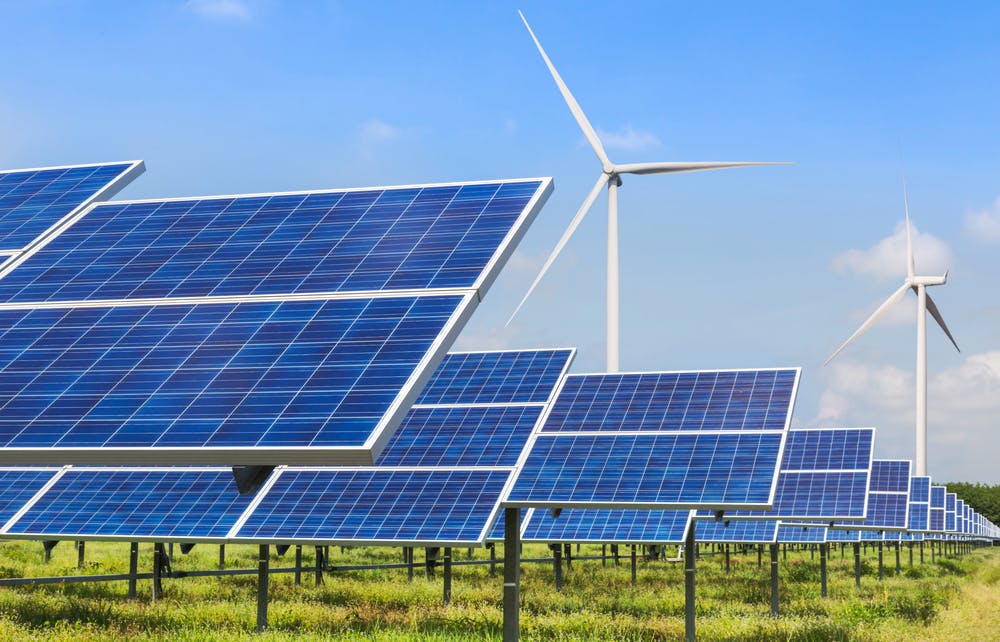Microgeneration
Learn more about microgeneration including how to apply and how to get paid for your exported electricity.
Microgeneration describes the generation of electricity through renewable energy sources installed in homes or small businesses. This includes electricity generated from:
- solar panels (PV panels)
- small wind turbines
- hydro
- micro renewable combined heat and power (CHP).
Electricity that's generated from renewable sources and is then stored in a battery to be used or exported at a later time is still regarded as renewable energy.
How to apply
- Fill in the NC6 or NC7 form
Applying for microgeneration begins by informing ESB networks of your new system. This is carried out by your registered installer by filling in the NC6 or NC7 form with details of your microgeneration system and submitting it to ESB Networks. Both NC6 and NC7 forms can be found below.
If your microgeneration system is less than 6kW for single phase electricity or less than 11 kW for three phase, you should use the NC6 form.
If your microgeneration system is greater than 6kW for single phase electricity (or 11 kW for three-phase) but not more than 50kW, you should use the NC7 form.
- ESB Networks informs your supplier
After ESB Networks have processed your NC6 or NC7 form, they will inform your supplier that you have installed a microgeneration system.
- Get paid for your generated electricity
Your supplier will pay you for every metered unit of electricity (kWh) that you export to the grid over the duration of your billing cycle. Every half hour interval is recorded by your smart meter and data is automatically generated for both exported and imported electricity.
Notifying your supplier
If you have a smart meter and your NC6 or NC7 form has been processed by ESB Networks, your electricity supply company will already be aware that you have a microgeneration system. There is no need to contact your supplier directly.
The payment process
Your supplier will pay you directly for every metered unit of electricity (kWh) that you export to the grid over the duration of your billing cycle. Payment for the amount of electricity that you export can usually be found as a credit on the bill you normally receive for your consumption of electricity. Alternatively, some suppliers may issue you a separate statement for microgeneration.
Information on your bill
If your microgeneration details are included on your electricity bill, you will be able to see the following information:
- the stated billing period
- the number of exported electricity units (kWhs) for which you are being paid
- the rate (€/kWh) paid for each unit exported.
Viewing your energy data
ESB Networks collects your microgeneration meter data and shares it with your chosen electricity supplier. If you are on a smart tariff and wish to view half-hour “interval” data (for both your demand and your export), you can sign up to the ESB Network customer portal. The ESB Network customer portal allows you to view a graphical representation of your demand and export which you may download in the form of a HDF (spreadsheet).
For more information on microgeneration calculations, take a look at our publication on the clean export guarantee.

CRU's role
The CRU works to ensure that customers are paid for the electricity that they export. We develop policy that requires suppliers and electricity system operators to put measures in place that accurately compensate customers for microgeneration.
In June 2024, the CRU published regulatory arrangements around payments for microgeneration. These regulations ensure that customers are paid for all generated electricity that exceeds their own use and is “exported” to the grid. Learn more about the regulatory arrangements below:
These arrangements ensure electricity customers who generate renewable electricity to meet part of their own demand, but who are exporting some excess electricity onto the grid, are receiving fair remuneration for their exported electricity.
Making a complaint about your supplier
If you're unhappy with the level of service provided by your supplier or by ESB Networks regarding microgeneration, you should make a formal complaint to the company in question.
Resolving complaints through CRU
If you have already made a formal complaint to your supplier or to ESB Networks and are not satisfied with the outcome, you may contact CRU. We provide a free complaint resolution service which can be accessed below.
Available grants for solar (PV)
If you're interested in starting microgeneration, there are grants that can help you get started.
Photovoltaic solar panels (PV) are by far the most common technology in use for microgeneration in Ireland. The Sustainable Energy Authority of Ireland (SEAI) offers a solar (PV) grant for homeowners and private landlords. Learn more about the grant and how to apply through the link below.
To get an overview of solar (PV) microgeneration, we recommend reading through SEAI’s Homeowner Guide to Solar PV. SEAI also publishes an updated list of registered PV installers. In order to be eligible to receive a grant through SEAI, your PV system must be installed by a registered installer from this list.
Further information
ESB Networks
ESB Networks are responsible for grid connection and access to data. ESB Networks may be able to answer specific questions on requirements about safety considerations and capacity limitations for generation equipment being hooked onto your electricity grid connection. Their website includes important information on connections and data which can be accesses through the links below:
- Connect to the grid & Step-by-Step guide
- ESB Networks’ Smart Meter Upgrade FAQs
- Access to your export data and electricity usage data
Department of Climate Energy and the Environment
DECCE are responsible for support schemes, including grants, for microgeneration and support tariffs (for example, CEP) for new microgeneration at non-domestic premises.
Frequently asked questions
Find answers to frequently asked questions about microgeneration in the document below.